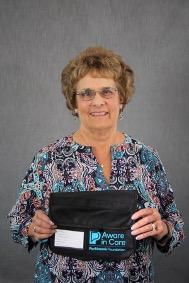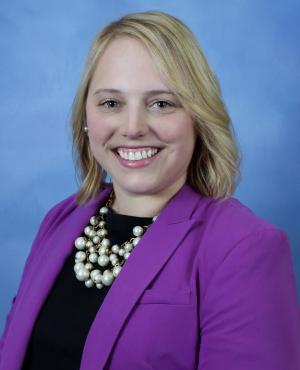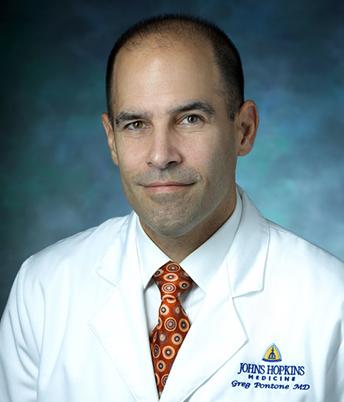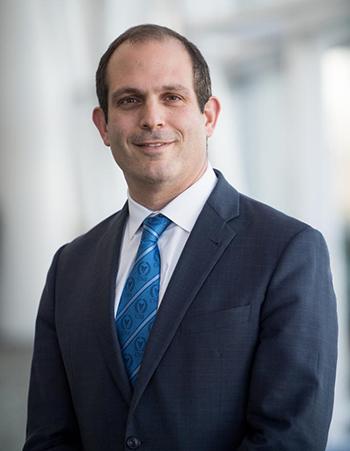¿Debería Considerar la Estimulación Cerebral Profunda?
La estimulación cerebral profunda (DBS, por sus siglas en inglés) es un tratamiento neuroquirúrgico para los síntomas de la enfermedad de Parkinson (EP, o PD, por sus siglas en inglés). El procedimiento ha sido realizado en miles de pacientes. ¿Es este procedimiento adecuado para usted?
Si usted o un miembro de su familia con Parkinson está considerando la estimulación cerebral profunda, hay varias medidas importantes que debe adoptar. La primera es aprender todo lo que pueda sobre este procedimiento. Lea mucho, reúna opiniones y hable con su médico. Además, sería conveniente que hablara con alguien que ya se haya hecho una.
Después de aprender más sobre la estimulación cerebral profunda, la siguiente medida es pedir una cita en un centro que se especialice en el tratamiento quirúrgico de la enfermedad de Parkinson. Es importante que cualquiera que esté considerando esta cirugía sea evaluado por un neurólogo que esté familiarizado con el procedimiento, los beneficios esperados y los posibles riesgos.
Si su neurólogo piensa que usted es un buen candidato para la cirugía, y usted decide seguir adelante, su siguiente medida será conocer al neurocirujano para informarse más y prepararse para la cirugía. El típico paciente que se somete a una cirugía de estimulación cerebral profunda ha tenido Parkinson durante ocho a dieciséis años. Los mejores candidatos para la cirugía tienden a estar dentro de dos categorías. Una es la de los pacientes con temblores severos o discapacitantes, que no responden a la medicación antiparkinsoniana. La segunda es la de las personas que experimentan graves fluctuaciones motoras que no se logran controlar con ajustes a los horarios de medicación. A lo largo del día, tienen muchos momentos de discinesias importantes intercalados con desgastes rápidos y crisis de “off”.
No todo el mundo es un buen candidato para la cirugía. Es importante reconocer que algunos de los síntomas del Parkinson responden bien a la estimulación cerebral profunda y otros no. La decisión de someterse a la cirugía depende de una evaluación crítica de los síntomas específicos de cada persona. Los síntomas que responden bien a la intervención incluyen el temblor, la rigidez, la bradiquinesia, la distonía y las discinecias. Los síntomas que no responden bien a la estimulación cerebral profunda incluyen los trastornos del equilibrio, los bloqueos (“freezing” en inglés) y las caídas, la postura encorvada y las alteraciones del habla
El resultado de la cirugía estará influenciado por varios factores. Uno de los mejores pronósticos de un buen resultado es la respuesta que la persona tenga a la levodopa, es decir, las personas cuyos síntomas aún responden bien a las dosis individuales del medicamento y que tienen movilidad durante sus períodos “on”, pueden esperar beneficios de la estimulación cerebral profunda.
Usted puede haber escuchado que la estimulación cerebral profunda no debe ser considerada hasta que los medicamentos del Parkinson se hayan vuelto completamente ineficaces. Esto no es verdad. Cuando los medicamentos dejan completamente de funcionar, la estimulación cerebral profunda tampoco funcionará. La cirugía promete más eficacia para aquellos pacientes que experimentan complicaciones con sus medicamentos, por ejemplo, discinecias, pero que continúan respondiendo bien a las dosis individuales de levodopa.
Los mejores candidatos para esta cirugía son personas que tienen un Parkinson típico con temblor, que responden a la levodopa, que están en buen estado de salud, que tienen la mente ágil, y que poseen una buena red de apoyo de familiares y amigos. La edad avanzada no excluye a quienes de otra manera son personas sanas que pueden ser un posible candidato para la estimulación cerebral profunda.
Los peores candidatos para la cirugía son las personas que no tienen un Parkinson típico y no responden bien a la levodopa. Los pacientes con demencia, apatía, depresión, mala salud y escaso apoyo familiar no deben someterse a una cirugía de estimulación cerebral profunda.
Cada persona es única, y para cada una, los objetivos de la cirugía van a ser diferentes. Para algunos, la necesidad más apremiante podría ser controlar el temblor discapacitante. Para otros, podría ser la necesidad de reducir las discinecias. Es muy importante que cada persona que esté contemplando la cirugía tenga una idea clara de lo que puede o no lograrse con esta intervención.
El rol del neurólogo, en colaboración estrecha con el neurocirujano en un centro médico especializado, es hacer una cuidadosa evaluación de cada persona que esté considerando la estimulación cerebral profunda. Basándose en una cuidadosa historia clínica y examen neurológico, el equipo puede determinar quién debería (o no debería) someterse a esta cirugía y predecir con precisión el resultado que se espera.
Es importante recordar que la estimulación cerebral profunda es un procedimiento electivo. Los neurólogos y los neurocirujanos harán sus recomendaciones, pero serán los pacientes y sus familiares los que tienen la responsabilidad de la decisión final. La estimulación cerebral profunda no es una cura para el Parkinson y no retrasa su avance, pero para muchos, puede reducir dramáticamente algunos síntomas del Parkinson y mejorar significativamente la calidad de vida de la persona.
Seis medidas a considerar
- Hable con su neurólogo
- Consiga información sobre la estimulación cerebral profunda
- Hable con alguien que ya se haya hecho una estimulación cerebral profunda
- Visite un centro que se especialice en cirugía para la EP
- Haga una cita con un neurólogo del centro
- Conozca al neurocirujano
La impresión ha sido posible gracias a una subvención educativa otorgada por Medtronic. El contenido ha sido creado independientemente por la Parkinson's Foundation.









